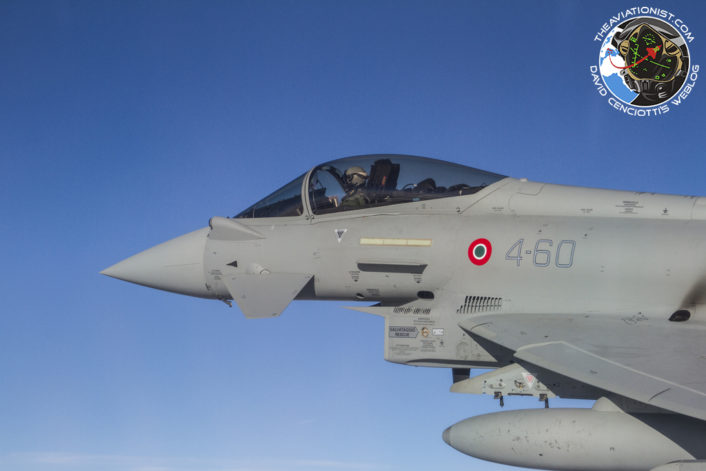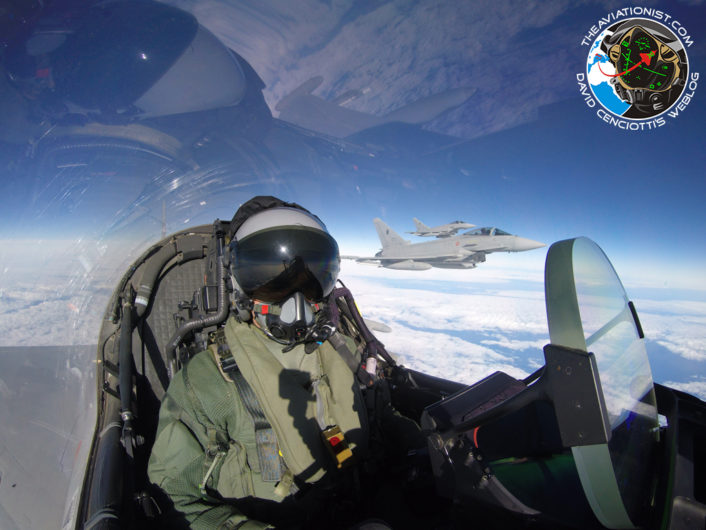A QRA (Quick Reaction Alert) cell deployed to an airbase in the northwest; fighters flying with live weapons during training flights: this is how the Italian Air Force deals with modern threats and shrinking budgets.
Italian Air Force 4.0: this is how it’s been unofficially dubbed. It’s the outcome of a restructuring phase that will enhance the effectiveness of the Air Power by leveraging joint, inter-agency cooperation and a more efficient use of the currently available assets.
In a long interview with Air Press, the Chief of Staff of the Aeronautica Militare (Italian Air Force, ItAF) Lt. Gen. Enzo Vecciarelli, provided many interesting details about the way the service is changing to face the most modern threats in an age of financial crisis, and with a plan to reduce its size (in terms of personnel) by about 25%.
The most interesting changes deal with the Italian Air Force’s primary mission: Air Defense.
After closing several airbases to concentrate its interceptors in just two MOBs (Main Operating Bases), Grosseto and Gioia del Colle, and one DOB (Deployment Operating Base), Trapani, the flying branch has realized that the current set up is strongly unbalanced: most of northern Italy is almost uncovered against the asymmetrical threat posed by ultralight aircraft or drones in the hands of terrorists.
For this reason, beginning on Sept. 1, 2016, a couple of Typhoons have started providing QRA duties from Cameri (in northwestern Italy), once the base of a Stormo (Wing) equipped with the F-104 Starfighter. From there, the Italian F-2000As (that’s how the Eurofighter jet fighters are designated in Italy) will be able to engage “renegade” planes much earlier than they would have done taking off from Grosseto (the airbase on H24 alert to provide air policing for all central and northern Italy and Slovenia.)

Even more noteworthy is the fact that, in order to be able to engage any aerial threat in the shortest possible time, nowadays all the fighter aircraft flying training missions, including the attack planes, carry live air-to-air weaponry so that the whole ItAF fleet of tactical assets contribute to the airspace surveillance duties: in spite of a bit of overhead required to service and manage many more aircraft carrying actual missiles, the new procedures enable a more efficient way to manage the fleet in accordance with the “train as you fight, fight as you train” motto.
Actually, even the SAR (Search And Rescue) helicopters, that ensure a round-the-clock operational readiness across the country, have been included in the air policing tasks in order to exploit their SMI (Slow Mover Interceptor) capability.
According to Vecciarelli, the restructing of the Air Defense and a more appropriate distribution on the territory allowed the Aeronautica Militare to quadruple the air defense capabilities at a very low-cost.

Furthermore, the Israel’s IAI will soon deliver the first of two Gulfstream G550 Eitam conformal airborne early warning (CAEW) aircraft (as well as ground support equipment and logistical support services) under the terms of a deal worth 750 million USD that was signed in 2012 as part of “a larger larger Government-to-Government agreement between Israel and Italy that includes aircraft, engines, maintenance, logistics, simulators and training, provided also by other Israeli and international companies.”
Although reinforced by several non-standard air defense assets (including the first multirole F-35s, that are expected to be delivered to Amendola airbase, to be taken on charge by the local-based 32° Stormo in the coming weeks), the Italian Air Defense’s main asset remains the Typhoon.
The Euro-canard has been providing air policing tasks since Dec. 16, 2005, when the 4° Stormo (Wing), first among all the partner nations, undertook the first QRA alert duty with the F-2000A from Grosseto.
Since then, the Italian Air Force has become the first to achieve the NATO Quick Response Force certification, has flown hundred alert scrambles, has supported NATO operations in Iceland, and enforced NFZs (No Fly Zones) during several highly-sensitive events, including the Turin 2006 Winter Games and Davos World Economic Forums, and has also taken part to Operation Unified Protector, flying sweep and escort missions over Libya.
From Jan. 1 to Aug. 27, 2015, as part of the TFA (Task Force Air) based at Šiauliai, Lithuania, four Typhoons of the 4°, 36° and 37° Stormo logged about 900 flying hours, 40 A-Scrambles (Alert Scrambles) and more than 160 T-Scrambles (Training Scrambles) in support of NATO BAP (Baltic Air Patrol) mission.
“Our involvement in the BAP mission is just the latest of several real operations we have taken part in the last years. […] We have the required know-how and a much mature aircraft,” told Col. Enrico Pederzolli, commander of the 4° Stormo, at Grosseto, in an interview to The Aviationist earlier this year.
Related articles
















